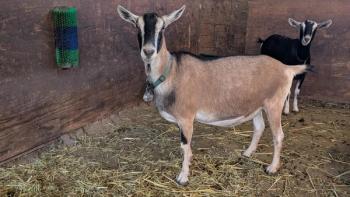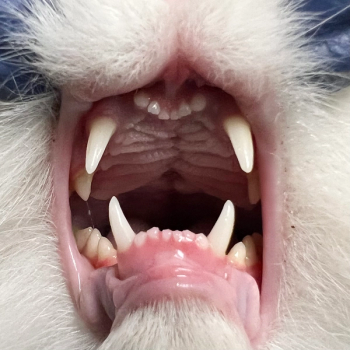
Editors' Guest: Have we been doing it wrong? Ovariectomy vs. ovariohysterectomy in small-animal practice
Dr. Jason Syrcle takes a close look at these two options for spaying pets.
The benefits of surgical gonadectomy for female dogs and cats are well-established and unquestioned. However, recent literature has challenged the status of ovariohysterectomy (OVH) as the accepted standard of care for female sterilization here in the United States.1 In some European countries, ovariectomy (OVE) has replaced OVH as the standard procedure advocated.1
Dr. Jason Syrcle
It is understandable that practitioners would be skeptical to abandon OVH, a procedure that most can perform quickly and efficiently, typically with little patient morbidity. Proponents of OVE claim the procedure may create less morbidity than OVH, with no difference in long-term complication rates.1 To further complicate the issue, the client or veterinarian may elect to perform either of these procedures using laparoscopy.
WHAT RESEARCH TELLS US
So how do we sort through these options? To address one common concern, are there any ill effects associated with leaving the uterus behind when performing OVE? One review comparing the procedures found no difference in the rates of endometritis, pyometra, uterine neoplasia, or urinary incontinence following the two procedures.1 Development of endometritis and pyometra requires hormonal stimulation, and neither should occur after properly performed OVH or OVE. Uterine neoplasia is rare in dogs and, in my opinion, should not drive the decision whether to perform OVE or OVH.
What about benefits of OVE over OVH? Does OVE truly produce less postoperative pain and patient morbidity than OVH? A recent study comparing open OVE and OVH found no difference in total surgical time, postoperative pain, or surgical wound characteristics between the two procedures.2
LAPAROSCOPIC OVE AND OVH
What about laparoscopic OVH or OVE? Results from recent studies in dogs have shown an apparent reduction in postoperative pain in dogs treated with laparoscopic OVE or OVH, compared with open surgery.3,4 The reduced pain was quantified through lower pain scores or increased postoperative activity in the patients treated with laparoscopy. A consistent disadvantage to laparoscopy as reported in the literature is a longer surgical time when compared with open procedures.3,4
Less postoperative pain has been demonstrated when laparoscopy is used to perform OVE or OVH, but disadvantages that may preclude its widespread use include the expense of necessary equipment, expertise needed to perform the procedures, and increased surgical time compared with open procedures. In our surgical practice, we most often perform laparoscopic OVE or OVH in conjunction with elective laparoscopic-assisted gastropexy in large- to giant-breed dogs. In my hands, laparoscopic OVE can be performed more quickly and with less apparent morbidity than laparoscopic OVH, so it is my procedure of choice.
SO WHERE DOES THAT LEAVE US?
At this point, definitive evidence supporting OVH or OVE as the superior procedure is lacking. However, there is evidence supporting OVE as a reasonable equivalent to OVH.1,2 Given the lack of overwhelming evidence supporting one technique or procedure over another, the decision to perform OVE or OVH, open or laparoscopically, remains with the client in consultation with his or her primary care veterinarian.
Jason Syrcle, DVM, DACVS, is an assistant clinical professor of small animal surgery in the Department of Clinical Sciences, College of Veterinary Medicine, Mississippi State University.
Editors' note: Do you think you'll try an ovariectomy? Why? Why not? Join the discussion at
REFERENCES
1. van Goethem B, Schaefers-Okkens A, Kirpensteijn J. Making a rational choice between ovariectomy and ovariohysterectomy in the dog: A discussion of the benefits of either technique. Vet Surg 2006;35:136-143.
2. Peeters ME, Kirpensteijn J. Comparison of surgical variables and short-term postoperative complications in healthy dogs undergoing ovariohysterectomy or ovariectomy. J Am Vet Med Assoc 2011;238:189-194.
3. Davidson EB, Moll HD, Payton ME. Comparison of laparoscopic ovariohysterectomy and ovariohysterectomy in dogs. Vet Surg 2004;33:62-69.
4. Culp WTN, Mayhew PD, Brown DC. The effect of laparoscopic versus open ovariectomy on postsurgical activity in small dogs. Vet Surg 2009;38:811-817.
Newsletter
From exam room tips to practice management insights, get trusted veterinary news delivered straight to your inbox—subscribe to dvm360.






